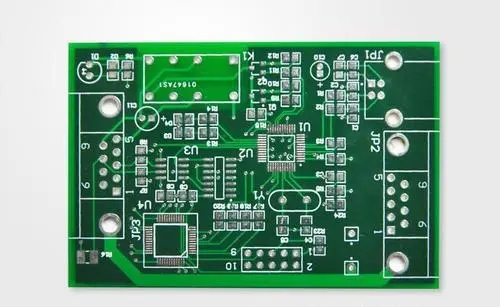Basic explanation of SMT terms

Accuracy: The difference between the measurement result and the target value.
Additive Process (addition process): a method of manufacturing PCB conductive wiring, by selectively depositing conductive materials (copper, tin, etc.) on the board.
Adhesion: Similar to the attraction between molecules.
Aerosol: Liquid or gas particles small enough to be airborne.
Angle of attack: The angle between the surface of the printing squeegee and the plane of the steel plate.
Anisotropic adhesive (anisotropic adhesive or conductive adhesive): A conductive substance whose particles only pass current in the Z-axis direction.
Annular ring: The conductive material around the hole.
Application specific integrated circuit (ASIC special application integrated circuit): A circuit customized by the customer for special purposes.
Array: A group of elements, such as solder ball points, arranged in rows and columns.
Artwork (wiring diagram): PCB conductive wiring diagram, used to produce the original photo, can be produced in any ratio, but generally 3:1 or 4:1.
Automated test equipment (ATE automatic test equipment): In order to evaluate the performance level, equipment designed for automatic analysis of functions or static parameters, and also for fault isolation.
Automatic optical inspection (AOI automatic optical inspection): On an automatic system, a camera is used to inspect models or objects.
B
Ball grid array (BGA ball grid array): The packaging form of integrated circuits, the input and output points of which are tin balls arranged in a grid pattern on the bottom surface of the component.
Blind via (blind via): The conductive connection between the outer layer and the inner layer of the PCB, which does not continue to the other side of the board.
Bond lift-off (welding lift-off): a fault that separates the solder pin from the surface of the pad (circuit board substrate).
Bonding agent (adhesive): A glue that bonds a single layer to form a multilayer board.
Bridge: The solder that connects two conductors that should be conductively connected, causing a short circuit.
Buried via: A conductive connection between two or more inner layers of a PCB (that is, invisible from the outer layer).
C
CAD/CAM system (computer-aided design and manufacturing system): Computer-aided design is the use of specialized software tools to design printed circuit structures; computer-aided manufacturing converts this design into actual products. These systems include large-scale memory for data processing and storage, input for design creation, and output devices that convert stored information into graphics and reports
Capillary action (capillary action): a natural phenomenon that causes molten solder to flow on solid surfaces close to each other against gravity.
Chip on board (COB board surface chip): A hybrid technology that uses face-up chip components that are traditionally connected exclusively to the circuit board base layer by flying wires.
Circuit tester: A method of testing PCBs in mass production. Including: needle bed, component pin footprint, guide probe, internal trace, loading board, empty board, and component testing.
Cladding (covering layer): A thin layer of metal foil is glued on the board to form PCB conductive wiring.
Coefficient of the thermal expansion (temperature expansion coefficient): When the surface temperature of the material increases, the measured material expansion per degree of temperature (ppm)
Cold cleaning (cold cleaning): an organic dissolution process, the residue is removed after the liquid contact completes the welding.
Cold solder joint (cold solder joint): a kind of solder joint that reflects insufficient wetting effect. It is characterized by gray and porous appearance due to insufficient heating or improper cleaning.
Component density: The number of components on the PCB divided by the area of the board.
Conductive epoxy (conductive epoxy): a polymer material, by adding metal particles, usually silver, to make it through the electric current.
Conductive ink: glue used on thick film materials to form PCB conductive wiring diagrams.
Conformal coating: A thin protective coating applied to PCBs that conform to the shape of the assembly.
Copper foil (copper foil): a kind of cathode electrolytic material, a thin, continuous metal foil deposited on the base layer of the circuit board,
It serves as the conductor of the PCB. It easily adheres to the insulating layer, accepts the printed protective layer, and forms a circuit pattern after corrosion. Copper mirror test (copper mirror test): a flux corrosion test, using a vacuum deposition film on the glass plate.
Cure (baking and curing): The change in the physical properties of the material, through a chemical reaction, or a pressure/no pressure reaction to heat.
Cycle rate (cycle rate): A component placement term used to measure the speed of the machine from picking up, positioning to the board and returning, also called test speed.
D
Data recorder: A device that measures and collects temperature from a thermocouple attached to the PCB at specific time intervals.
Defect: A component or circuit unit deviates from a normally accepted characteristic.
Delamination: The separation of the plate layer and the separation between the plate layer and the conductive cover layer.
Desoldering (unloading): the welding components are disassembled for repair or replacement, methods include: suction tin with suction tape, vacuum (solder suction tube) and hot drawing.
Dewetting: The process of covering and then retracting the molten solder, leaving irregular residues.
DFM (Design for Manufacturing): A method of producing a product in the most efficient way, taking time, cost, and available resources into consideration.
The above is an introduction to some of the basic terms of SMT. Ipcb is also provided to PCB manufacturers and PCB manufacturing technology